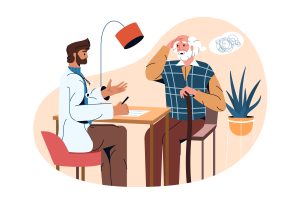Best Parkinson's Disease Treatment Clinic in Delhi

Introduction:
Parkinson’s disease is a progressive neurological disorder that affects millions worldwide, impacting movement, balance, and quality of life. In the bustling city of Delhi, finding comprehensive and effective treatment for Parkinson’s can be daunting. However, amidst the myriad of options, one clinic stands out as a beacon of hope and excellence – the Parkinson’s Disease Treatment Clinic led by Dr. Shrey Jain.
Expertise and Experience:
Dr. Shrey Jain is a renowned neurologist with extensive experience in treating Parkinson’s disease. His expertise, coupled with a deep understanding of the condition, allows him to provide personalized and effective treatment strategies tailored to each patient’s unique needs.
Comprehensive Care:
At the Parkinson’s Disease Treatment Clinic, patients receive comprehensive care encompassing diagnosis, medication management, rehabilitation, and support services. Dr. Jain and his team utilize the latest advancements in medical science and technology to ensure optimal outcomes and improved quality of life for patients.
Innovative Treatments:
Dr. Jain employs a multidisciplinary approach to Parkinson’s treatment, offering a range of innovative therapies, including medication, deep brain stimulation (DBS), physiotherapy, occupational therapy, and speech therapy. These treatments aim to alleviate symptoms, enhance mobility, and slow disease progression, enabling patients to lead fulfilling lives.
Compassionate Support:
Beyond medical interventions, Dr. Jain and his team provide compassionate support and guidance to patients and their families throughout their journey with Parkinson’s. They offer education, counseling, and resources to empower individuals to manage their condition effectively and maintain independence.
Patient-Centered Approach:
What sets the Parkinson’s Disease Treatment Clinic apart is its patient-centered approach. Dr. Jain takes the time to listen to each patient’s concerns, understand their goals and preferences, and involve them in decision-making regarding their treatment plan. This collaborative approach fosters trust, confidence, and better outcomes.
Conclusion:
If you or a loved one is living with Parkinson’s disease, the Parkinson’s Disease Treatment Clinic led by Dr. Shrey Jain offers a beacon of hope and support. With expertise, compassion, and innovation at its core, the clinic is dedicated to providing comprehensive and personalized care to help patients live their best lives despite Parkinson’s. Schedule a consultation today and take the first step towards a brighter future.



